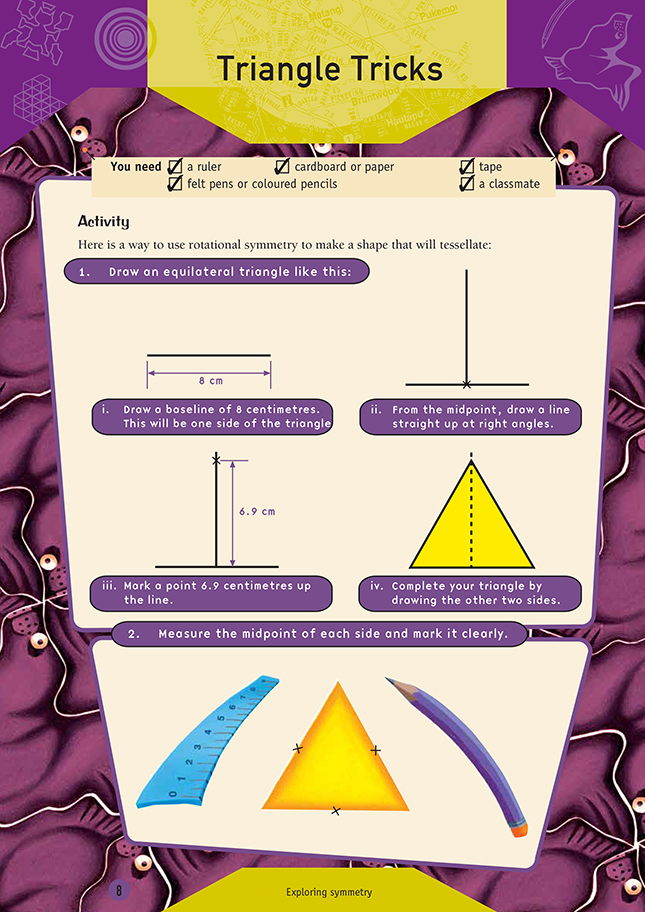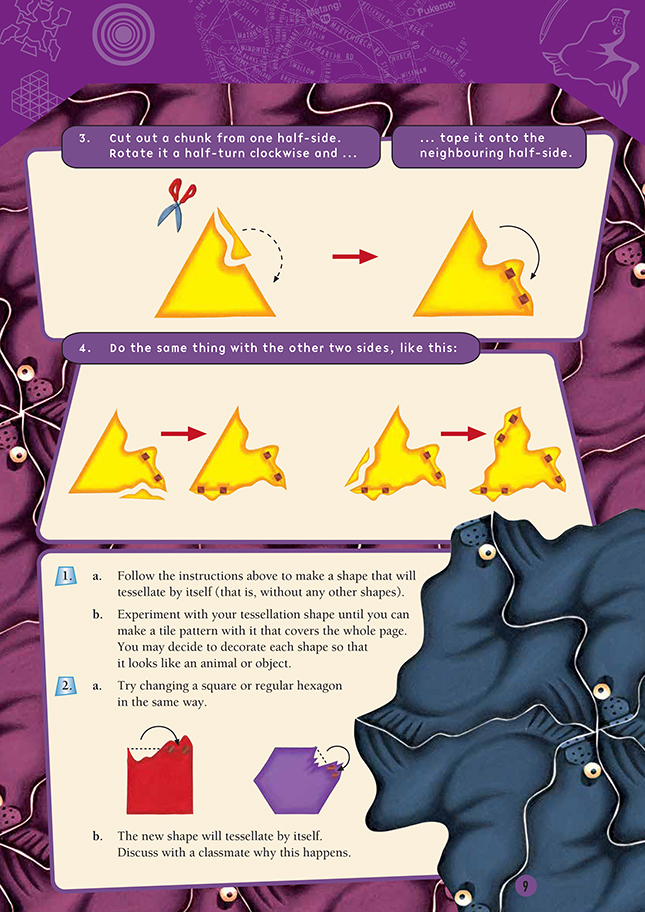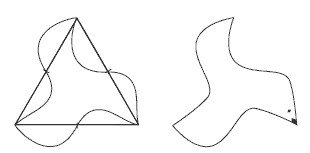This is a level 3 geometry strand activity from the Figure it Out series.
A PDF of the student activity is included.
Click on the image to enlarge it. Click again to close. Download PDF (529 KB)
make a tessellation pattern using rotational symmetry
ruler
cardboard or paper
tape
felt pens or colouring pencils
FIO, Level 3-4, Geometry, Triangle Tricks, page 8
classmate
This method for creating tessellations is restricted to equilateral triangles, squares, and regular hexagons.
The students can alter all the sides of the polygon differently. If they have difficulty imagining an interesting animal or object, they could discuss their shapes with classmates to get ideas. By adding lines, marks, and colours, they can develop the artistic aspect of their tessellation and add an individual flavour to their patterns. They can experiment with tessellating their shape and using colour to complete the
work. Using contrasting colours for adjacent tiles can be an effective technique.
In question 2b, the students discuss with a classmate why their shapes tessellate. It is important that they do this because it may be only through discussion that they find that they have created the tessellation by using rotations, reflections, or translations.
Encourage the students to examine their tessellations for symmetries. The example on the following page is a good starting point. Get the students to start with a regular shape, such as an equilateral triangle, and cut and paste it as shown in the illustrations.
This gives a shape that has rotational symmetry of order 3, that is, the shape matches onto itself exactly three times during one complete turn. If the shape is then used to tessellate the plane, the pattern created has rotational symmetry of order 6. Why does the equilateral triangle tessellate to a pattern with rotational symmetry of order 6? The internal angle of the equilateral triangle is 60°.
6 x 60 = 360, so it takes six equilateral triangles to make up 360° at the point where the vertices meet. Therefore the pattern will have rotational symmetry of order 6.
The students may find that the way in which they have coloured their patterns alters the order of rotational symmetry. The best known creator of such tessellations is M. C. Escher. He designed an amazing collection of interesting shapes that fit together to cover a plane. Compiling a collection of Escher designs for students to examine would be worthwhile. These are available in a number of books, such as The
Graphic Work of M. C. Escher by M. C. Escher (London: Pan/Ballantine, 1961), and in posters and calendars. Another useful resource book for teachers is Creating Escher-type Drawings by E. R. Ranucci and J. L. Teeters (Palo Alto, CA: Creative Publications, 1977).
Answers to Activity
1. Practical activity
2. a. Practical activity
b. The interior angles of a square add up to 360°, and the interior angles of a hexagon add up to 720°, which is two times 360°. Although these shapes have been altered, the interior angles will still add up to 360° (for the shape based on a square) and 720° (for the shape based on a hexagon). Each new shape will tessellate because the interior angles around the vertex will always add up to 360°.


